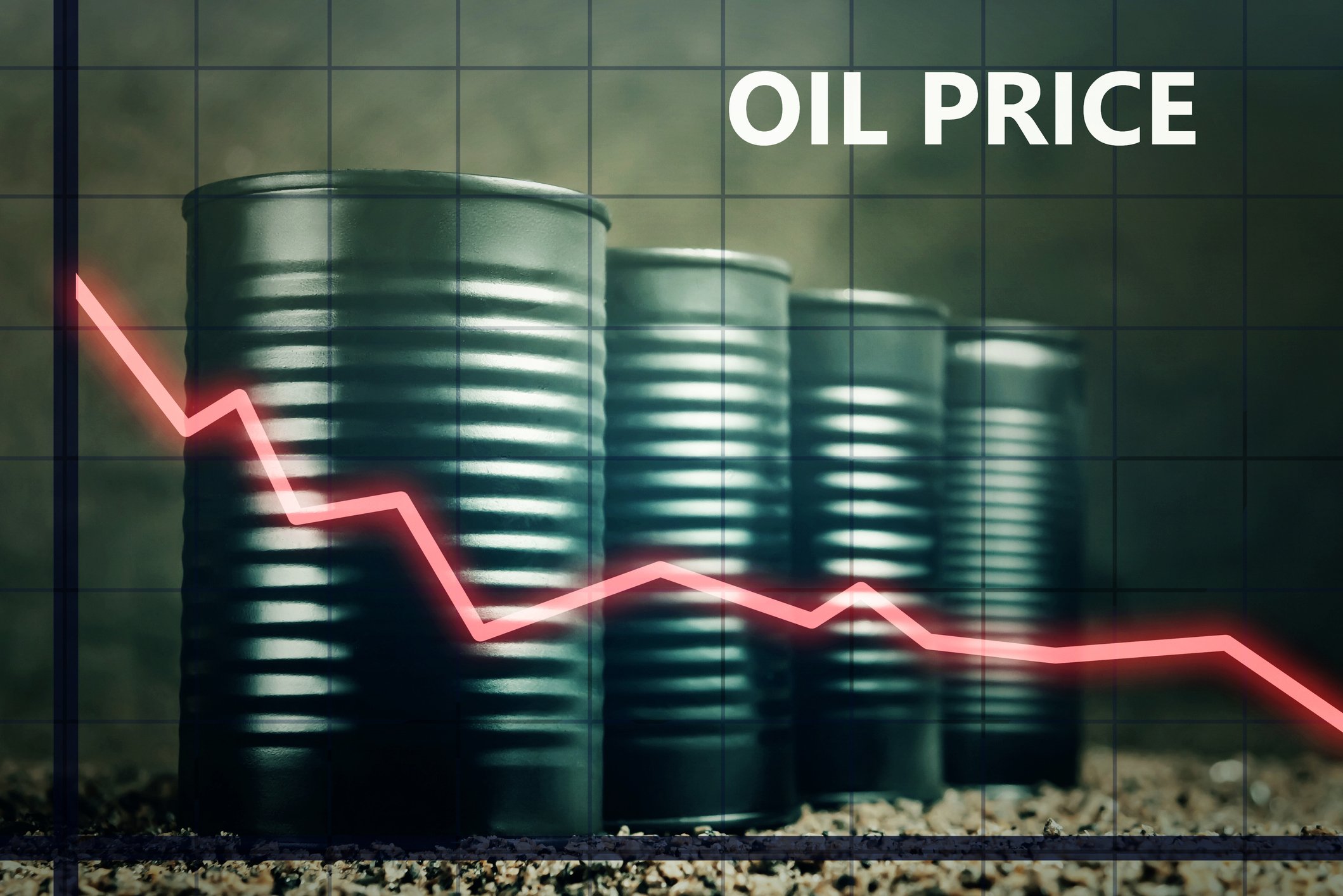Middle East tensions have increased volatility in the crude oil market recently, but investors might want to focus less on the past couple weeks' price action and more on the fact that Brent and West Texas Intermediate (WTI) crude oil prices have been on the rise since last summer, and crude oil prices are significantly above their 2018 lows. In fact, WTI is trading about 4% higher than it was in August and more than 30% higher than it was in late 2018.
It's anyone's guess where oil prices go from here, but if average oil prices wind up higher in 2020 than they were last year, owning beaten-down oil stocks with increasing production and improving balance sheets could pay off. A number of oil stocks meet that criteria, but three top names you ought to be considering are Denbury Resources (DNR +0.00%), VAALCO Energy (EGY +6.92%), and Hess Corporation (HES +0.00%).

IMAGE SOURCE: GETTY IMAGES.
Big oil exposure with plans to reduce its debt
Denbury Resources is arguably the riskiest of these three oil stocks. The company went on an acquisition spree between 2010 and 2013, during which it spent more than $6 billion. Those deals increased its oil and gas reserves to 262.2 million of barrels of oil equivalent but also saddled it with mountainous debt that has hamstrung the company since crude oil prices peaked at more than $100 per barrel back in 2014.
The goods news is that the company is chipping away at its debt, and since it derives 97% of its revenue from oil (mostly Gulf Coast), rising oil prices this year could bump up cash flow, allowing it to accelerate debt repayment plans and improve its profitability.
Denbury has generated more than $600 million in free cash flow over the past five years, including $44 million during Q3 2019. That's allowed it to reduce debt by $1.2 billion since 2014 to roughly $2.5 billion exiting the third quarter.
The company also announced in December that it's selling 50% of its interest in assets generating approximately 1,050 barrels of oil equivalent per day (BOE/D) to Navitas Petroleum for $50 million. The deal frees up room in its capital spending budget, because Navitas will take the lead on boosting production at those assets. It also gives Denbury more financial wiggle room. Denbury also thinks a voluntary separation program finalized in December could save it $21 million in employee costs per year, too, giving management even more breathing room.
Denbury estimates every $5 increase in crude oil prices adds $100 million to annual cash flow, so the company could make even more progress toward improving its balance sheet if crude prices climb in 2020. Given its book value is $2.87 per share, increasing cash flow and less worry over its debt could mean shares march considerably higher.
Increasing offshore production
Debt isn't much of an issue for VAALCO Energy. The company had $57 million in cash and equivalents exiting Q3 2019, compared to just $37 million in total debt. Therefore, VAALCO's upside isn't tied to fixing its balance sheet but to maximizing returns on projects that are increasing its production offshore Gabon.
VAALCO has a 31.1% stake in Etame, an offshore block in West Africa. Etame production averaged 3,081 BPD in Q3 2019, but a new well coming online prompted management to estimate in October that production would exit 2019 at an average daily rate of more than 3,800 barrels per day. In December, management said the new well was exceeding expectations, allowing it to increase its target for end-of-year production by 16% to between 4,500 and 4,700 barrels per day.
And that's not all. VAALCO expects another new Etame well will begin production by the end of January, contributing another 675 BPD to 960 barrels of oil per day. Overall, VAALCO thinks its production can increase 25% in 2020 from 2019. If it does, increasing Brent crude oil prices could send revenue -- and thus shares -- significantly higher.

IMAGE SOURCE: GETTY IMAGES.
A restructuring pays off
Hess Corporation's decision to jettison slow-growth fields a few years ago to focus on production in high-return projects could make it the least risky bet of these three, especially since a massive new source of production offshore South America is coming online this year.
In 2017, management pocketed $3.5 billion from spinning off midstream assets and selling mature fields. The capital allowed it to pay down debt, prefund expenses associated with its share of ExxonMobil's (XOM +2.89%) exploration offshore Guyana, and boost drilling activity in the prolific Bakken Shale.
The focus on the Bakken is already paying off. Bakken production averaged 105,000 net BOE/D per day in 2017. In 2018, production grew to 117,000 net BOE/D. And in 2019, estimates are that Bakken production averaged 150,000 per day. Management thinks ongoing activity in the Bakken will result in its production there climbing to 200,000 BOE/D in 2021, resulting in free cash flow of more than $800 million.
But it's not just the Bakken that could make Hess a winner. Hess' 30% stake in ExxonMobil's Stabroek acreage offshore Guyana could be an even bigger driver of success in the future. So far, ExxonMobil's reported 15 discoveries in Stabroek totaling more than 6 billion barrels of recoverable resources. The first phase of Guyana production is underway, and ExxonMobil believes it will be producing at a rate of 120,000 BOE/D in a matter of months. It estimates Stabroek production will exceed 750,000 BOE/D by 2025, increasing Hess' current production by 225,000 BOE/D.
Given Hess' total estimated production of 285,000 BOE/D per day in 2019, Bakken production ramping through 2021, and Guyana production starting, Hess could be a big beneficiary of rising oil prices this year.









